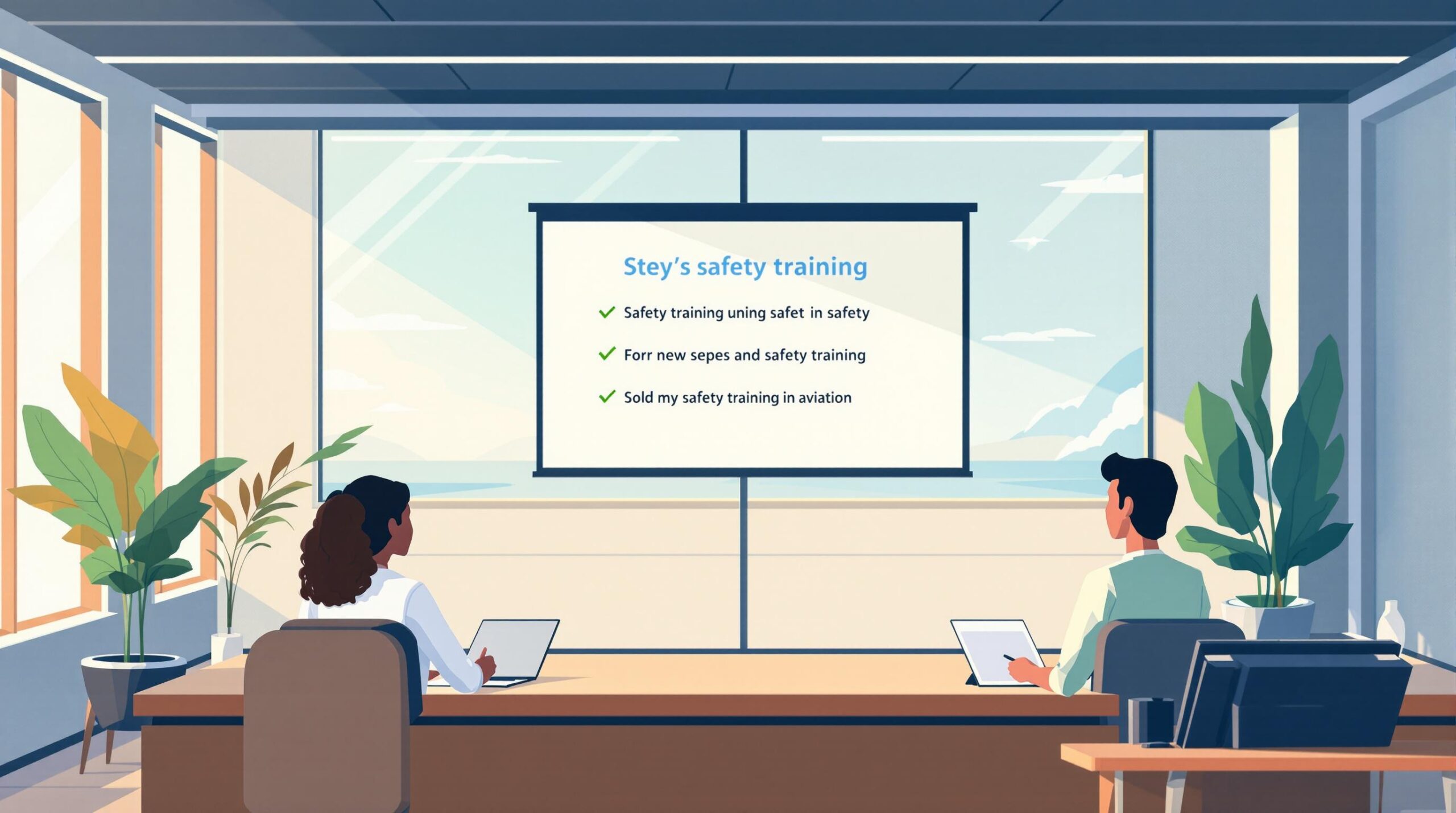Airline recruiters prioritize pilots with a mix of technical expertise and soft skills. To make your resume shine, focus on these key areas:
- Flight Operations: Navigation systems, flight planning, and modern cockpit tech.
- Aircraft Systems Mastery: Proficiency in electrical, hydraulic, and fuel systems.
- Instrument Flying: Precision in low-visibility conditions and weather decision-making.
- Emergency Response: Calm, decisive actions during crises.
- Clear Communication: Effective ATC interactions and teamwork.
- Crew Management: Leadership and coordination under pressure.
- Quick Decision-Making: Risk assessment and action execution in high-stakes moments.
Highlight measurable achievements like flight hours, certifications, and on-time performance. Use ATS-friendly formatting and tools like Pilot Pathfinder to organize your qualifications effectively. A strong resume combines technical skills, teamwork, and a commitment to safety.
What To Include On A Pilot Resume + Pilot Skills
1. Flight Operations Skills
Flight operations skills are the backbone of a pilot’s expertise and a must-have focus on any airline resume. Airlines look for pilots who excel in these areas because they directly impact safety, efficiency, and regulatory compliance on every flight.
Navigation Expertise Be sure to highlight your experience with tools like Flight Management Systems (FMS), GPS navigation, Electronic Flight Bags (EFBs), and communication systems such as ACARS. Show your ability to interpret aeronautical charts and work effectively with air traffic control.
"Pilots must be able to work effectively with air traffic control, dispatchers, and other crew members to ensure safe navigation and on-time performance." – Russ Leighton [1]
Flight Planning Skills Demonstrate your ability to interpret weather reports, calculate fuel needs, manage weight and balance, and address ETOPS requirements for twin-engine aircraft. These skills are essential for smooth and safe operations.
Tech-Savvy Operations Modern cockpits require comfort with advanced systems. Showcase your proficiency with navigation tools, communication systems, and performance software, ensuring you can seamlessly integrate these technologies into your workflow.
Key Certifications Include certifications like your Airline Transport Pilot (ATP) certificate, type ratings, and any special endorsements. If you’re a newer pilot, emphasize your simulator training and the scenarios you’ve mastered. Tools like Pilot Pathfinder can help you organize and present these qualifications in a clear and impactful way.
While flight operations skills are essential, a deep understanding of aircraft systems is just as important for safe and efficient flying.
2. Aircraft Systems Mastery
Having a strong understanding of aircraft systems – like electrical, hydraulic, fuel, and pressurization systems – is key to ensuring safe and efficient operations. Airlines value pilots who excel in these areas because it directly impacts both operational reliability and passenger safety.
Make sure to highlight your skills in areas such as electrical power distribution, hydraulic systems, and fuel management. Focus on how these systems contribute to flight safety and performance. Be specific about your ability to troubleshoot and resolve system failures, manage interdependencies, and execute emergency procedures, like detecting early signs of hydraulic or electrical issues.
"Understanding aircraft systems in flight is essential for safe operation and proper maintenance." – Zippia [2]
If you’re proficient with advanced avionics, mention the specific systems you’ve worked with to showcase your technical expertise. Including this in your resume will demonstrate your readiness to handle the demands of modern flight operations.
Don’t forget to list any recent training or certifications – such as type-specific systems courses or advanced avionics credentials. These show that you’re committed to staying up-to-date with the latest technology. Use practical examples to illustrate how your systems knowledge has improved flight safety or solved technical challenges.
A solid grasp of aircraft systems is also crucial for instrument flying, where precision and technical know-how are non-negotiable.
3. Instrument Flying Skills
Having strong instrument flying skills is essential for airline pilots to operate safely in any weather. This involves managing complex systems and maintaining precise flight control, especially in demanding conditions.
Precision Navigation in Low Visibility is all about executing accurate approaches and staying aware of your surroundings when visual cues are minimal. Highlight your hands-on experience with advanced navigation tools for instrument conditions on your resume. For example, mention tasks like performing CAT III approaches or managing operations in busy terminal areas.
Weather Decision-Making plays a key role in IFR (Instrument Flight Rules) operations. Pilots must interpret weather data effectively to plan routes, choose alternate airports, and assess approach feasibility. Matthew A. Johnston, President of California Aeronautical University, emphasizes:
"IFR training is highly valuable to all pilots, veteran airline captains as well as hobbyists because it provides the pilot with the ability to fly in low visibility conditions without making an unplanned landing."
Make sure your resume reflects expertise in areas like:
- IFR operations and navigating complex airspace
- Using advanced approach procedures and precision landing systems
- Managing low-visibility scenarios and challenging weather
- Employing backup navigation systems when needed
If you’re using tools like Pilot Pathfinder to build your resume, ensure that your instrument flying hours and certifications are clearly listed. This not only shows your skill level but also your dedication to safety in all weather conditions.
Strong instrument flying skills go beyond precision – they prepare pilots to handle emergencies with confidence and accuracy.
4. Emergency Response Skills
Airline pilots must be prepared to handle emergencies with confidence and precision. These skills show your ability to manage high-pressure situations while ensuring safety. Airlines look for pilots who can stay calm and make smart decisions when it matters most [2].
Key Emergency Management Areas include:
- Handling critical system failures (engine, electrical, hydraulic)
- Executing emergency landings and evacuations
- Managing cabin pressurization issues and onboard fires
- Operating emergency systems effectively
When detailing your emergency response expertise, focus on both your technical knowledge and hands-on experience. Highlight certifications in emergency procedures, simulator training hours, and any real-life crisis situations you’ve managed. Show how you work with your crew during emergencies, emphasizing clear and effective communication.
"Crisis Decision-Making is equally important to emphasize on your resume. Airlines want to see that you can make sound judgments in high-pressure situations." [2]
To underline your commitment to safety, include:
- Participation in emergency procedure workshops
- Up-to-date safety protocol certifications
- Regular simulator training sessions
- Measurable experience in managing emergency scenarios
Tools like Pilot Pathfinder can help you organize these qualifications in a way that appeals to airlines. Be sure to provide clear, measurable examples – such as the number of simulator hours or specific emergency situations you’ve successfully managed – to back up your claims.
While being skilled in emergency response is crucial, strong communication is just as important to ensure smooth coordination and safety throughout all flight operations.
sbb-itb-de05b1b
5. Clear Communication Skills
Clear communication is key to ensuring aviation safety and maintaining professionalism. Federal Aviation Administration data shows that poor radio communication is linked to 60-80% of aviation incidents and accidents.
Key elements of effective communication include using standard aviation phraseology, keeping radio transmissions brief and clear, active listening, providing accurate readbacks, navigating cross-cultural differences, and preparing precise written flight reports.
For example, an incident at Boston Logan Airport highlighted how incomplete ATC readbacks led to a major delay, emphasizing the need for precise communication.
When adding communication skills to your resume, focus on real-world scenarios that highlight your abilities. Mention experiences such as handling ATC interactions at busy airports, coordinating in multi-crew settings, managing emergency communications, or producing accurate flight documentation.
Showcase specific skills like:
- Mastery of standard aviation terminology
- Proper use of "Wilco" and "Roger" protocols
- Balancing brevity with clarity in transmissions
- Proficiency with the phonetic alphabet
You can also include examples of managing frequency changes in crowded airspace or working with international ATC. Tools like Pilot Pathfinder’s resume builder can help you present these skills in a way that grabs recruiters’ attention.
Strong communication doesn’t just stop at radio skills – it’s also essential for smooth teamwork in the cockpit, ensuring everyone is on the same page during flights.
6. Crew Management Skills
Managing a crew effectively is a critical skill for airline pilots, directly influencing both flight safety and operational success. At its core, this skill is built on Crew Resource Management (CRM), which focuses on using all available resources – equipment, procedures, and personnel – to handle both routine operations and unexpected challenges.
Take, for instance, Captain Chesley "Sully" Sullenberger’s handling of the emergency landing on the Hudson River during US Airways Flight 1549. His ability to lead and manage his crew under extreme pressure underscores the importance of strong crew management.
Here are some essential aspects of crew management to highlight on your resume:
- Leadership Flexibility: Showcase your ability to adapt your leadership style – whether directive, collaborative, or hands-off – based on the situation at hand.
- Team Coordination: Provide examples of fostering open communication and encouraging input from all crew members.
- Resource Management: Highlight your skill in coordinating crew and equipment to ensure smooth and efficient operations.
"Because teamwork is so essential, it’s a contributing factor in making the aviation industry one of the safest industries among other high-risk professions." – Leadership Essentials: A Pilot’s Perspective
When describing your crew management skills, use specific examples. Detail scenarios where you successfully led your team through challenging weather, emergency procedures, or other high-pressure situations. Emphasize CRM-related abilities like communication, situational awareness, problem-solving, leadership, stress management, and a focus on continuous improvement.
Effective crew management goes beyond the cockpit. Include examples of working with cabin crew, ground staff, and air traffic control to highlight your understanding of the broader aviation team dynamics.
Strong crew management not only promotes teamwork but also enables quick, informed decision-making under pressure – an essential quality for any airline pilot.
7. Quick Decision Making
Effective crew management depends heavily on a pilot’s ability to make rapid, informed decisions, especially when the stakes are high. This skill involves quickly assessing a situation and taking decisive action.
In aviation, decisions often come down to seconds. Whether it’s sudden weather changes or unexpected system issues, pilots must juggle multiple factors while keeping the aircraft steady and coordinating with the crew.
On your resume, highlight your quick decision-making skills by focusing on:
- Situational Awareness: Show how you stay aware of your surroundings and assess risks and options under pressure.
- Risk Assessment: Demonstrate your ability to evaluate options and predict outcomes swiftly.
- Action Execution: Highlight your skill in implementing decisions promptly while following standard procedures.
"Decision-making skills are critical for a pilot, as you’ll often need to make quick and sound decisions. In an emergency, pilots must make potentially life-saving choices, often with limited information and minimal time." – Indeed, Essential Pilot Skills: A Guide for Job Seekers [2]
Simulator training plays a big role in sharpening decision-making. It helps pilots build the mental framework needed to make accurate, fast choices during real-world challenges.
Include examples of situations where you:
- Responded quickly to medical emergencies
- Navigated severe weather conditions successfully
- Resolved technical malfunctions under pressure
- Coordinated effectively with the crew in time-sensitive scenarios
Emphasize how you stay calm and act decisively while sticking to standard procedures. If you’re looking to sharpen these skills further, platforms like Pilot Pathfinder offer scenario-based training and interview prep tools. These resources focus on practical exercises and real-world examples to help you refine your decision-making abilities.
The combination of quick thinking, technical know-how, and teamwork ensures you’re ready to face any challenge with confidence.
How to List Skills on Your Resume
To make your pilot resume stand out, your skills section needs to be well-organized and focused. Aviation industry data shows that 85% of recruiters prefer resumes that clearly showcase certifications and flight hours.
Organizing Your Skills
Break down your skills into categories and back them up with measurable achievements. Here’s an example:
| Category | Examples |
|---|---|
| Flight Operations | Navigation Systems, Weather Analysis, Flight Planning |
| Technical Proficiency | Aircraft Systems, Emergency Procedures, Avionics |
| Soft Skills | Crew Leadership, Communication, Decision Making |
| Regulatory Knowledge | FAA Regulations, Safety Protocols, SOPs |
Add specific details like:
- Total Flight Hours: 5,200
- Aircraft Types: Boeing 737, Airbus A320
- Certifications: ATP, Type Ratings
Make your skills more impactful by including numbers. For example: "Maintained a 100% safety record over 1,000 flight hours" or "Achieved a 98% on-time departure rate as PIC."
Optimizing for ATS
Most airlines use Applicant Tracking Systems (ATS) to screen resumes. To ensure your resume gets noticed:
- Use tools like Pilot Pathfinder’s resume builder for ATS-friendly formatting.
- Stick to simple layouts with standard headings and industry-specific terms.
When writing your skills section:
- Tailor your skills to match the airline’s job posting.
- Integrate keywords from the job description.
- Balance technical expertise with soft skills.
- Highlight accomplishments that align with the airline’s core needs.
Conclusion
Creating an airline pilot resume that stands out means showcasing both your technical expertise and your ability to work well with others. According to recent aviation data, 85% of recruiters prioritize candidates with a strong mix of skills and measurable accomplishments.
A great resume highlights key strengths like proficiency in flight operations, aircraft systems, and instrument flying, along with interpersonal skills such as communication, crew coordination, and sound decision-making. To make your resume shine, use ATS-friendly formatting, include specific metrics like flight hours, safety records, and on-time performance, and ensure all certifications are up-to-date.
Tools like Pilot Pathfinder can simplify the process by integrating logbook data and providing templates designed to meet industry standards. This ensures your qualifications are presented clearly and effectively to recruiters.
The aviation industry also values pilots who stay committed to growth. Participating in extra training sessions and keeping up with industry trends can further enhance your skillset. By combining these strategies, you’ll craft a resume that grabs attention in a competitive field.




